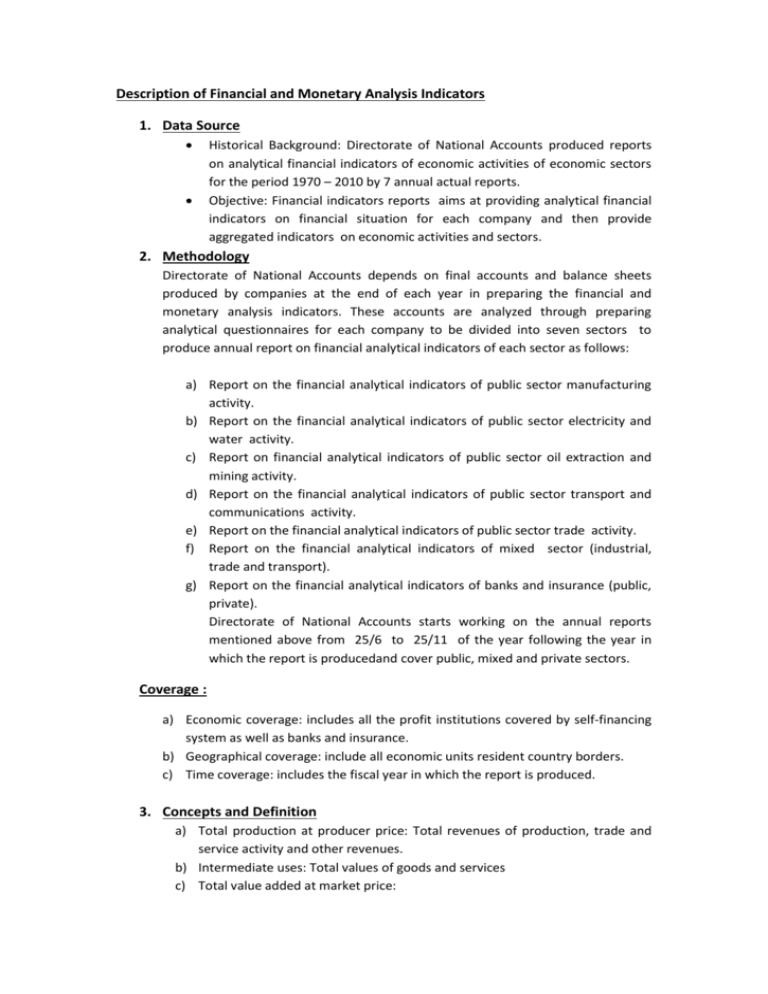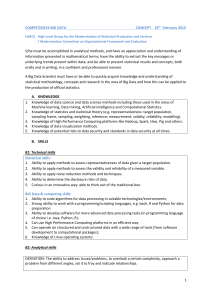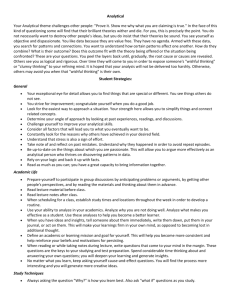Finantial & Monetary Analyses
advertisement

Description of Financial and Monetary Analysis Indicators 1. Data Source Historical Background: Directorate of National Accounts produced reports on analytical financial indicators of economic activities of economic sectors for the period 1970 – 2010 by 7 annual actual reports. Objective: Financial indicators reports aims at providing analytical financial indicators on financial situation for each company and then provide aggregated indicators on economic activities and sectors. 2. Methodology Directorate of National Accounts depends on final accounts and balance sheets produced by companies at the end of each year in preparing the financial and monetary analysis indicators. These accounts are analyzed through preparing analytical questionnaires for each company to be divided into seven sectors to produce annual report on financial analytical indicators of each sector as follows: a) Report on the financial analytical indicators of public sector manufacturing activity. b) Report on the financial analytical indicators of public sector electricity and water activity. c) Report on financial analytical indicators of public sector oil extraction and mining activity. d) Report on the financial analytical indicators of public sector transport and communications activity. e) Report on the financial analytical indicators of public sector trade activity. f) Report on the financial analytical indicators of mixed sector (industrial, trade and transport). g) Report on the financial analytical indicators of banks and insurance (public, private). Directorate of National Accounts starts working on the annual reports mentioned above from 25/6 to 25/11 of the year following the year in which the report is producedand cover public, mixed and private sectors. Coverage : a) Economic coverage: includes all the profit institutions covered by self-financing system as well as banks and insurance. b) Geographical coverage: include all economic units resident country borders. c) Time coverage: includes the fiscal year in which the report is produced. 3. Concepts and Definition a) Total production at producer price: Total revenues of production, trade and service activity and other revenues. b) Intermediate uses: Total values of goods and services c) Total value added at market price: d) Total value added at cost price: The increase in gross domestic production as a result of economic unit performance after calculating net taxes. e) Net value added at cost price: Total value added at cost price less annual depreciation. f) Net current transfers: Net value of transferring revenues of the economic unit. g) Income of production factors: total incomes of the four production factors contribute to the production process. h) Compensation of employees: Salaries, wages and benefits. i) Operation surplus: The residual of net value added at cost price after excluding compensation of employees. 4. Classifications Reports are classified by economic sectors ( public, mixed and private), reports of public sector include: a) Report on the financial analytical indicators of public sector electricity and water activity. b) Report on financial analytical indicators of public sector oil extraction and mining activity. c) Report on the financial analytical indicators of public sector transport and communications activity. d) Report on the financial analytical indicators of public sector trade activity. e) Report on the financial analytical indicators of public sector manufacturing activity. Mixed sector is analyzed by producing report on financial analytical indicators which includes three activities ( industry, trade and transport). h) Activity of banks and insurance includes the report on the financial analytical indicators of banks and insurance of only public and private sectors . 5. Methods of Calculation a) Total production at producer price: commodity production value = commodity production value + trade activity revenue + service and other revenues. b) Intermediate uses = commodity inputs – employees supplies + service inputs – employees transportation – subscriptions and credits – insurance installments + special service expenses + commission paid. c) Total value added at market price = total production at producer price – intermediate uses. d) Total value added at cost price = total value added at market price – indirect taxes + subsidies. e) Net value added at cost price = total value added at cost price – annual depreciation. f) Net current transfers = transfers and other revenues – ( transfers and other expenses + subscriptions and credits + insurance installments - special service expenses – taxes and fees). g) Production factors income = net value added at cost price + net current transfers = net profit or loss + salaries and wages + net profits paid + net land rentals paid. h) Compensation of employees = salaries and wages + employees supplies + employees transportation. i) Operation surplus = net value added at cost price - compensation of employees. As for banks and insurance, revenues = bank profits received - bank profits paid while revenues of insurance company = insurance installments received – compensations paid. 6. Data availability a) Data of financial and monetary analyses are collected at Iraq level b) Data are disseminated in publications as well as in excel and pdf format on CSO web. c) All the financial and monetary analyses reports are annual and produced since 1970.







